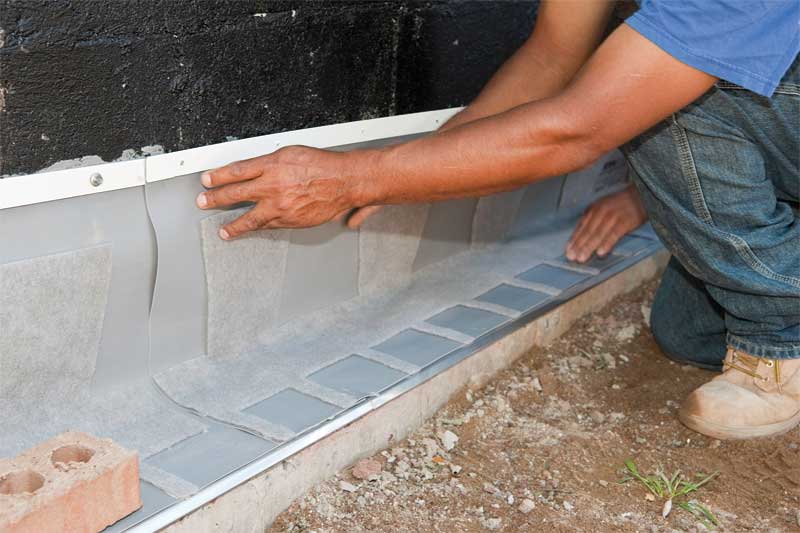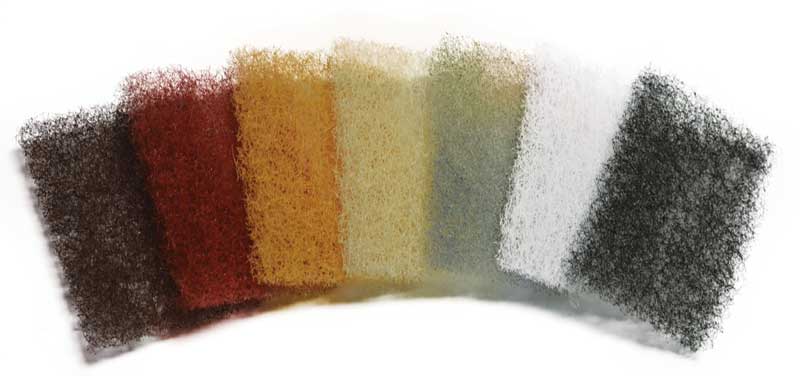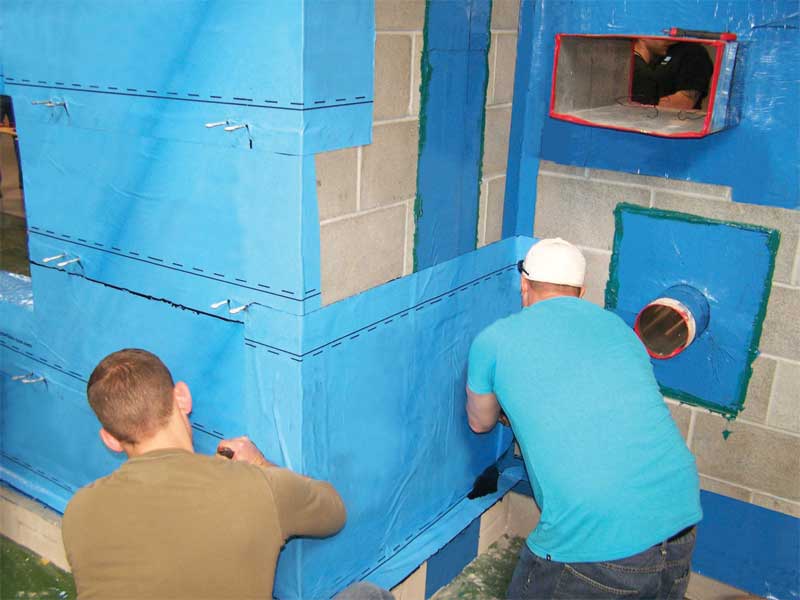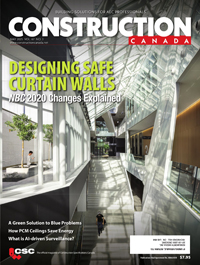Best practices for masonry wall systems and insulation

A complete wall system
A complete wall system has five functional layers. Two of the layers are the wall boundaries—the structural backup (e.g. steel or wood studs) and sheathing or concrete masonry units (CMU), and a weather-resistant cladding such as masonry on the exterior. Between these two boundaries are three functional layers containing all of the wall’s core components. A truly complete system provides the testing and documentation showing all the components performing as a system.
The three functional layers are:
- thermal efficiency;
- air/water management; and
- structural connections.
They comprise components providing all of the necessary performance attributes relevant for a high-quality, sustainable wall. In stud walls, the thermal efficiency components include stud cavity insulation, continuous insulation (ci), and a vapour retarder, if needed. In CMU walls, the block cells may be insulated. Insulation may also be installed on the interior, or the designer may rely on ci on the exterior of the block to meet requirements.
Air/water management encompasses multiple drainage planes, including air barriers and WRBs in cavity and adhered masonry walls, plus through-wall flashing in cavity walls. Sealing against air and water intrusion also requires the specification of mechanical fasteners with sealing washers. In cavity walls, weep vents and mortar dropping protection must be included. In adhered masonry walls, a drainage plane and weep screed must be specified, all without missing a detail.
Structural connections must be accomplished with single-barrel masonry anchors and sealing washers to properly transfer loads while minimizing and sealing necessary penetrations. Mineral wool safing insulation may also be required for fire protection.

Air barriers
Air barriers restrict airflow in and out of the wall as well as minimize energy loss and condensation from moist leaking air. By controlling moisture, they reduce or prevent mould growth and corrosion while improving the building life and energy efficiency, as well as the overall comfort of occupants.
Some air barriers act as WRBs as well, providing a water-resistant envelope and thereby not only preventing water accumulation in the building, but also establishing a drainage plane inside the wall. The specifying architect must decide whether the WRB is sheet- or fluid-applied, rolled on, or sprayed, and whether it is permeable or impermeable. Among the popular choices are acrylic air- and water-resistive barriers, which are very flexible and have the ability to tolerate building movement. They are fluid-applied and permeable, so they permit limited vapour to pass through, which allows drying and provides ‘forgiveness’ against moisture accumulation in the wall—all while keeping liquid water out.
Insulation
In masonry veneer walls with wood or steel stud structural backup, batt insulation is normally specified in the stud cavity. However, since the stud framing creates a ‘thermal short’ through the cavity insulation layer—as much as 50 per cent through steel studs—the batt insulation value is often effectively cut in half. Therefore, ci is routinely added to the cavity in cavity walls and behind the lath in adhered masonry walls to conform to energy codes such as ANSI/American Society of Heating, Refrigerating and Air-conditioning Engineers/Illuminating Engineering Society (ASHRAE/IES) 90.1-2016, Energy Standard for Buildings Except Low-rise Residential Buildings. When properly installed using thermal break fasteners, ci minimizes thermal bridging so heat transfer is dramatically reduced.

Water inevitably gets into the air space in cavity walls and behind the lath in adhered masonry walls. Therefore, ci in the cavity or behind the lath should be highly water-resistant. In Tech Note 28-B, Brick Veneer/Steel Stud Walls, the Brick Industry Association (BIA) recommends the use of water-resistant, closed-cell, rigid foam insulation sheathing such as extruded polystyrene (XPS) to prevent water penetration. The chemistry and manufacturing process of XPS causes it to be inherently water-resistant, meaning it does not rely on facers for this purpose. Facers are easily damaged onsite so they cannot be relied on to keep water out.
Sprayed polyurethane foam (SPF) is sometimes used in stud cavities or as ci. Sprayfoam has the advantage of being able to seal small cracks to limit air movement, but it requires careful control of in-field installation conditions to achieve the necessary insulating properties. Additionally, the application temperature, nozzle pressure, and speed of the applicator wand must be precise, and the installer must be very careful to use proper personal protection and overspray control.
When considering other insulation materials, water penetration, impact on thermal properties, fire resistance, and effects of site conditions on the performance of the product should be examined. XPS is a factory-made board product, meaning its insulating properties are quality controlled in the factory and proper installation is not as dependent on site conditions as sprayfoam.
The architect must also consider the installation method for ci. With board products, corrosion-resistant, ceramic-coated screws with air and water sealing washers offer long life and limit air movement and energy loss. Sealing washers are available with prongs that insert into the foam to enable the contractor to be more efficient by pre-spotting washer locations. The washers must be large enough to distribute the stress of pulling the water-resistant XPS insulation tight against the air barrier/sheathing to effectively seal the screw penetrations. Small details like this can make a big difference in how the wall assembly performs and should be part of the specification.


